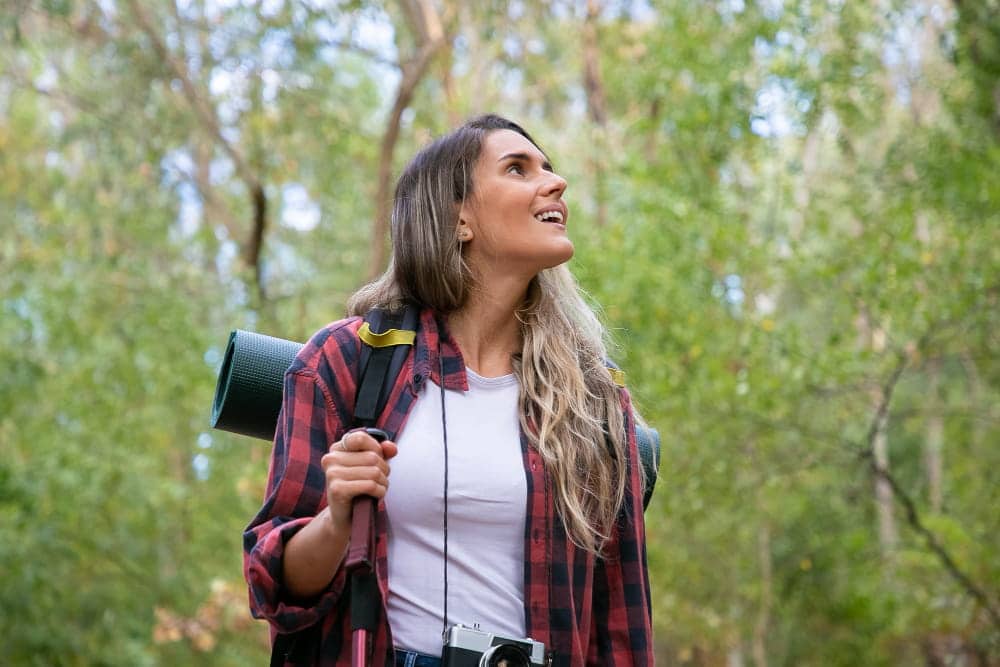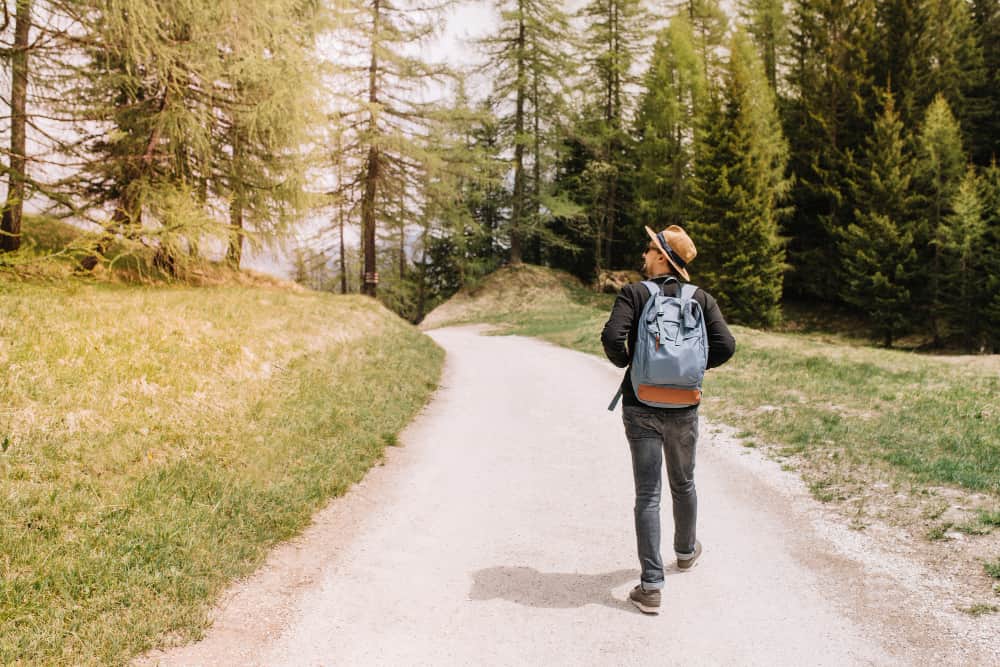
Walking the Camino de Santiago is such an intense experience that many people find once is not enough. It’s not just a historical route or a physical challenge: it’s an inner journey that leaves a lasting impression and awakens the desire to return.
Thousands of pilgrims return every year. They do so for reasons as varied as they are profound: to reconnect spiritually, to once again feel the magic of the experience, to explore different routes or simply for the joy of walking. But what is it about the Camino that draws people back? What does this ancient route have that makes it so addictive?
Índice de contenidos
- 1 A journey beyond the physical: reasons to return
- 2 Every Camino, a different experience: routes that leave their mark
- 3 The value of returning: walking again is not the same as walking for the first time
- 4 Testimonials and statistics: how many actually return?
- 5 Is it normal to repeat the same route or change?
- 6 The Camino evolves, the spirit remains
- 7 Returning as a way of life: the Camino and personal growth
A journey beyond the physical: reasons to return

More than just the body: a transformative experience
The first time you walk it, it often comes as a surprise. You set off thinking about distances, maps and backpacks, and end up discovering something much deeper. It’s common for pilgrims to reach the Cathedral of Santiago and feel that something inside them has changed. And when an experience does that, repeating it becomes inevitable.
The sense of freedom, constant contact with nature, absence of external pressure and slower pace all contribute to the Camino feeling like a much-needed pause in life—like returning to a place that you didn’t know before but now never want to leave. For many, coming back is a way to care for themselves.
Reconnecting with the present
Pilgrimage is a school that helps you live in the moment. Sleeping soundly after a long day’s walk, noticing the scent of the forest after rain, hearing only the sound of your boots on the path… Everything invites you to connect with what’s right in front of you and beneath your feet. This ability to be fully present—so difficult to achieve in everyday life—is one of the main reasons people return.
Returning to close a chapter
Others return for a specific reason: to heal from loss, to celebrate a milestone birthday, to pick up something left unfinished or to close a personal chapter. Because of its symbolism, the Camino becomes the perfect setting to transform emotional journeys into tangible experiences.
Every Camino, a different experience: routes that leave their mark
There isn’t just one Camino. There are many routes, each with its own character, geography and way of touching the soul. This variety is one of the strongest reasons to come back. Each itinerary allows you to experience the journey in a unique way.
- Camino Francés – The great classic. From the Pyrenees to Santiago, this is the most popular route. With changing landscapes, historic towns, hundreds of hostels and a vibrant pilgrim community, it’s ideal for those seeking connection. Repeating this route is often a way to reconnect with the origins of the pilgrimage.
- Camino del Norte – Wild and profound. Much less crowded and naturally stunning. Skirting the Cantabrian Sea, with cliffs and forests, it offers a balance between solitude and human connection. The stretch of the Camino de Santiago from Santander to Gijón is especially recommended for those seeking an authentic route with fewer crowds and more introspection.
- Portuguese Coastal Way – Between the sea and history. From Porto, this coastal variant offers ocean views, peaceful villages and a different type of experience.
- Many choose the Portuguese Camino from Porto to A Guarda to enjoy the Atlantic and the hospitality of northern Portugal. The Camino from A Guarda to Santiago de Compostela is ideal as a final stretch, offering beautiful Galician scenery with the sea ever-present.
- Camino Primitivo – The most demanding, the most authentic. From Oviedo to Lugo and then Santiago. Tough, mountainous and less travelled. It’s the perfect choice for those who’ve done another route and now seek a more physical and personal experience. Asturian and Galician landscapes that take your breath away.
- Camino Inglés – Short but intense. This alternative can be completed in under a week. It holds a special charm due to its history (used by British pilgrims) and its intimate feel. Ideal for repeating in spring or when short on time.
- Route to Finisterre and Muxía. Continuing beyond Santiago to the sea is almost a natural extension of the journey. Finisterre and Muxía hold deep symbolic meaning: the end of the earth, the horizon as renewal.
- Those who have already reached the Cathedral often decide to return and walk on to this point for a different kind of experience. Others choose it as a final destination to once again purify their soul.
The value of returning: walking again is not the same as walking for the first time

-
-
- The second Camino is different. You already know the pace, how to pack your backpack, or which footwear works best, for example. This frees you to experience the journey with more calm, openness, and less anxiety. You can stop more often, improvise, and listen to your body. It’s common for returning pilgrims to choose a slower pace or even shorten the number of stages.
-
-
-
- A different mindset, a different experience. Doing it again allows you to enjoy it from a new emotional perspective. Some repeat the journey to accompany a child, partner, or friend; others to give thanks for a personal or professional change. No two Caminos are the same, even when walking the same path.
-
-
-
- Exploring new ways to walk. Some dare to walk the route in reverse (from Santiago to the starting point), by bike, or even in stages spread over several years. Others walk it solo after previously doing it in a group, or vice versa. Every variation changes the experience.
-
Testimonials and statistics: how many actually return?
According to recent statistics, more than 30% of pilgrims arriving in Santiago have done the Camino at least once before. This figure rises to 40% for those over 50 years old.
Who tends to return?
-
-
- Retired individuals who incorporate the pilgrimage into their yearly routine.
-
-
-
- International travellers who try different routes on successive visits.
-
-
-
- Young people returning after a life-changing first experience.
-
-
-
- People who have undergone a major life change (grief, divorce, retirement…).
-
Rising trends
The number of returning pilgrims increases every year. The possibility of choosing less crowded routes, the growing interest in mindful walking, and the flexibility of planning short stretches have led many to feel it’s a must to step into Plaza del Obradoiro at least once a year.
Is it normal to repeat the same route or change?
In general, most pilgrims who return choose to try different routes, especially if their first experience was the French Way. This is the most popular and accessible, so many begin there. Once completed, they seek alternatives that are less crowded or offer different scenery: coastal, mountainous, or shorter routes.
However, a significant number of pilgrims choose to walk the exact same route again. Why? To relive certain emotions, revisit familiar places, or pay tribute to a meaningful personal moment from the past.
Indicative data and real behaviours
Although there are no official statistics detailing how many repeat the same route versus changing, there are clear trends:
-
-
- An estimated 60–70% of returning pilgrims walk a different route (based on data from associations in Galicia and León).
-
-
-
- The French Way remains the most walked by repeat pilgrims, as many wish to do it again at a slower pace or in a different season.
-
-
-
- Those seeking introspection or new challenges tend to choose the Primitivo, the Northern Route, or the Sanabrés.
-
-
-
- International pilgrims often try different routes on subsequent trips: many start with the Portuguese or French Way and later explore other alternatives.
-
Reasons to choose a different route
-
-
- Curiosity about new landscapes or cultures.
-
-
-
- A different level of difficulty: physical or logistical.
-
-
-
- Fewer pilgrims (for those seeking a more reflective experience).
-
-
-
- Greater connection with nature, such as on the Northern or Winter Routes.
-
-
-
- Shorter or more manageable stages, such as the English Way or the final stretches of coastal routes.
-
Reasons to repeat the same route
-
-
- Emotional connection with that particular route.
-
-
-
- A need to relive a healing experience.
-
-
-
- To accompany other people (partner, children, friends).
-
-
-
- To seek a different experience during a new season (e.g. walking in autumn after doing it in spring).
-
-
-
- Personal growth: walking more stages, more slowly, or with less outside help.
-
The Camino evolves, the spirit remains

Improvements and innovation
Over the years, all routes have changed. Better signage, more quality accommodation, backpack transport options, and advance booking are now available. All this makes it easier for more people to return. At the same time, there’s growing interest in alternative routes, such as the Winter, Sanabrés or Mozarabic Ways. This variety keeps the experience alive and ensures it never becomes dull.
The role of specialised agencies
While many prefer to organise their journey independently, more and more people are choosing services to help with planning. Camino de Santiago travel agencies provide logistical support without compromising authenticity. Their assistance is especially useful for those returning with specific goals, such as enjoying the scenery more, walking without heavy loads, or focusing on the spiritual side.
Returning as a way of life: the Camino and personal growth
Walking the Camino multiple times becomes a practice of inner growth for many. Each return offers a chance to view life from a new perspective, reconnect with what matters, and strengthen your bond with yourself.
There is no single way to return: some return for the love of the path, others for the company, others out of nostalgia. But all agree on one thing: the experience changes you, and after doing it once, you always want to go back.
The Camino de Santiago is far more than a route. It’s an experience that touches the physical, mental, and spiritual. And when something transforms you like that, you don’t leave it behind easily.
Returning isn’t repeating. It’s going deeper. It’s answering an inner call that invites you to walk again, to live with less noise, to feel more intensely. Whether it’s for new routes, new questions, or simply a desire to reconnect with yourself, thousands of pilgrims each year prove that the Camino doesn’t end – it renews itself.
And in that constant return, we discover that the real journey isn’t towards Santiago… but towards what each of us finds along the way.









